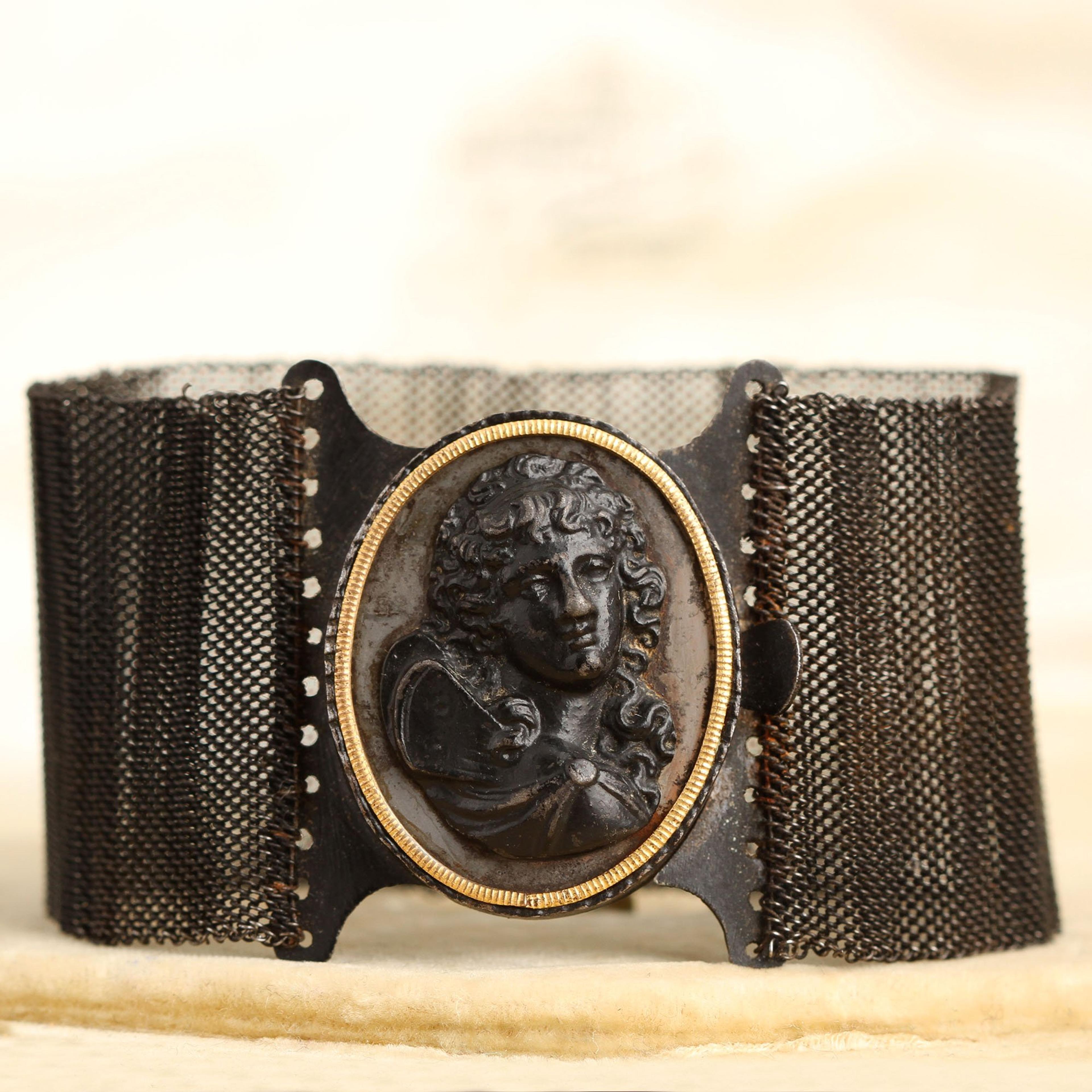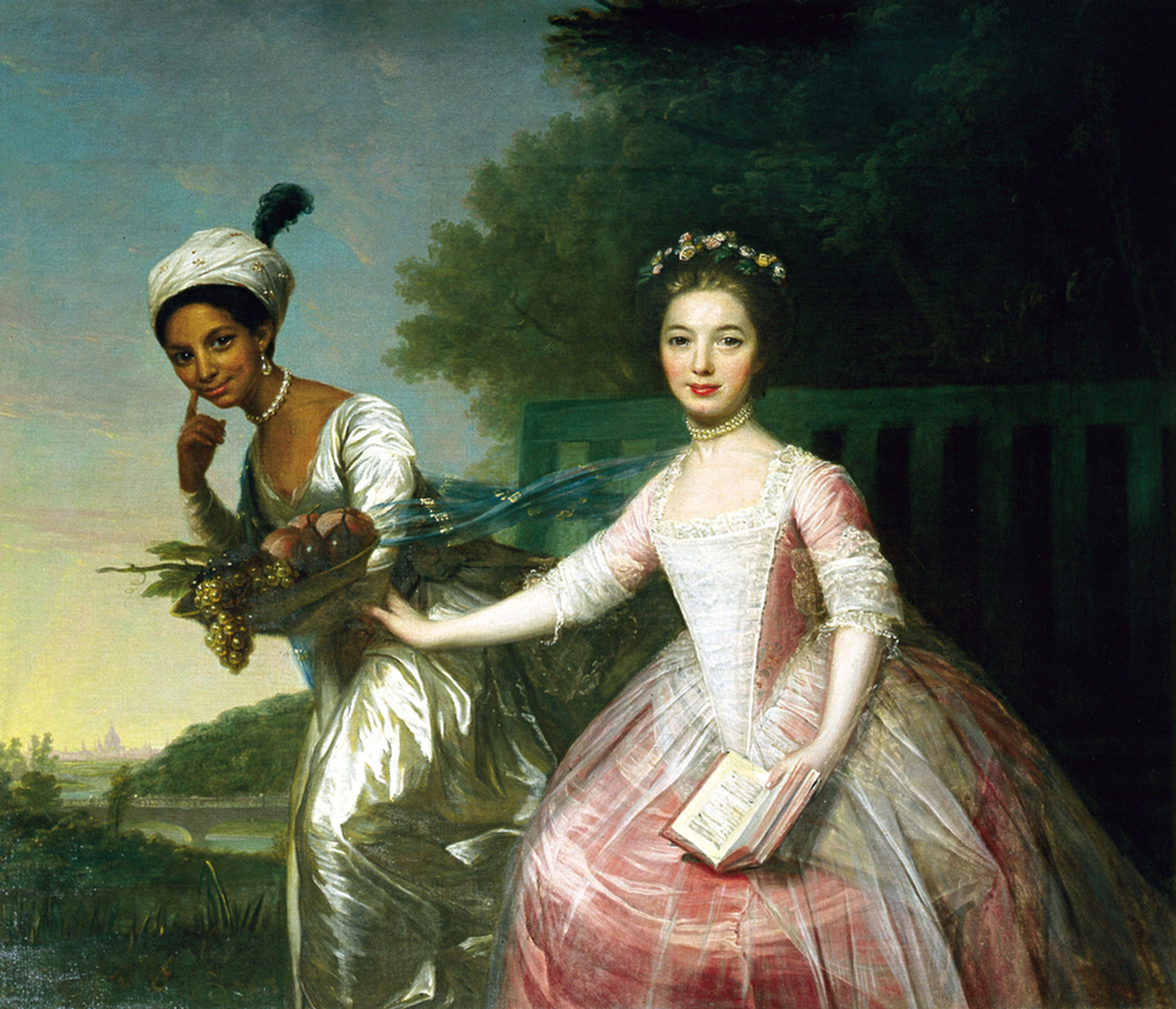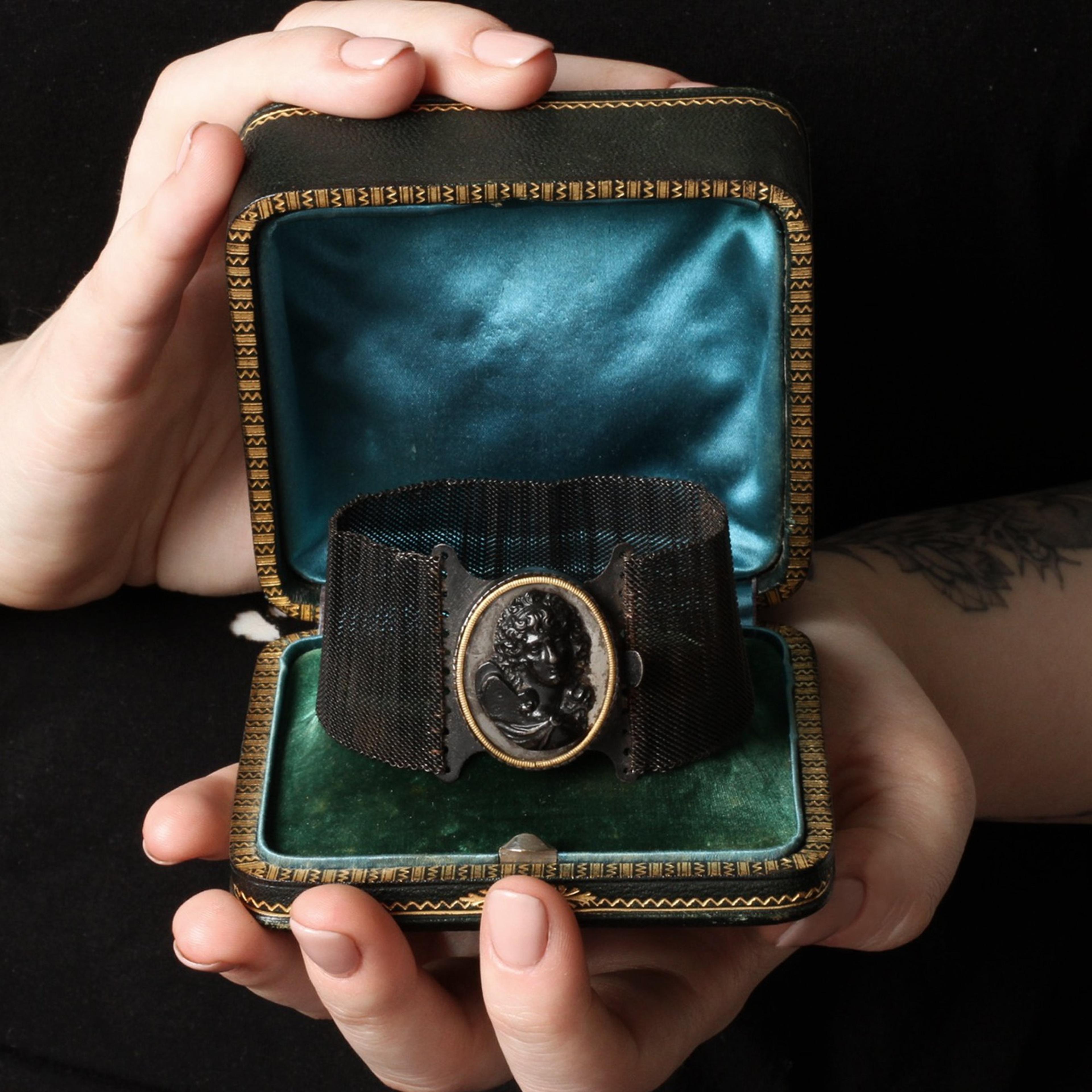The jewelry we call Berlin iron was produced as part of the gold-for-iron campaign that began in 1813 in what is now Germany. To fund the Prussian effort to repel the forces of Napoleon, citizens were urged to donate their gold to the state and were given a piece of lacquered iron jewelry in return. The drive for gold was quite successful, so much so that not only were the Prussian war chests filled, but also the wearing of gold jewelry became a social faux pas - unseemly and unpatriotic. As a result, Berlin iron jewelry became very fashionable and high street jewelers began to retail the distinctive black jewelry to satisfy demand for the style. (We have heard it argued that there were many monied people who didn't want to forfeit their gold and gems to the state, these people simply hid their precious jewels away and purchased Berlin iron jewelry in order to blend). This Berlin iron bracelet has a wide band of fine mesh with a decorative clasp featuring a cameo of Eros Centocelle on a mirrored ground. Berlin iron is quite rare, this is due, in part, to the fact that iron is prone to oxidation and rust. This means that you should take care not to get this bracelet wet and store it in a cool, dry place. This bracelet is very old and may not be suitable for everyday wear.
thedetails
- Materials
Black lacquered iron
- Age
c. 1820
- Condition
Very good - some discoloration to the mirrored background, spot new black lacquer on the back of the cameo, most likely applied to prevent oxidation
- Size
6 3/4" total length, 1 1/8 x 15/16" cameo, 1 1/4" width of mesh band
Need more photos?
Send us an email to request photos of this piece on a model.


Aboutthe
GeorgianEra
1714 — 1837
As imperialist war raged in the Americas, Caribbean, Australia, and beyond, the jewelry industry benefited: colored gems from all over the empire became newly available. A mix of artistic influences from around Europe contributed to the feminine, glittering jewels of the era. Dense, ornate Baroque motifs from Italy showed up in Georgian jewelry, as did French Rococo’s undulating flora and fauna. Neoclassical style made use of Greek and Roman motifs, which were newly popular due to the recently uncovered ruins of Pompeii and Herculaneum. Lapidary methods improved: the dome-shaped rose cut was popular, as was the “old mine cut,” a very early iteration of today’s round brilliant cut.
The boat-shaped marquise diamond cut was developed around this time, supposedly to imitate the smile of Louis XV’s mistress, the marquise de Pompadour. Paste — an imitation gemstone made from leaded glass — was newly developed in the 18th century, and set into jewelry with the same creativity and care as its more precious counterparts. Real and imitation gems were almost always set in closed-backed settings, lined on the underside with thin sheets of foil to enhance the color of the stone and highlight it's sparkle. This makes Georgian rings tough for modern women to wear, especially on an everyday basis: genteel, jewelry-owning ladies of the 18th century were not famous for working with their hands like we are. Nor did they wash their hands as much as we do. Water will virtually ruin a foiled setting, so take special care with your Georgian ring. Very little jewelry from this period is still in circulation, and it's very difficult to repair.
